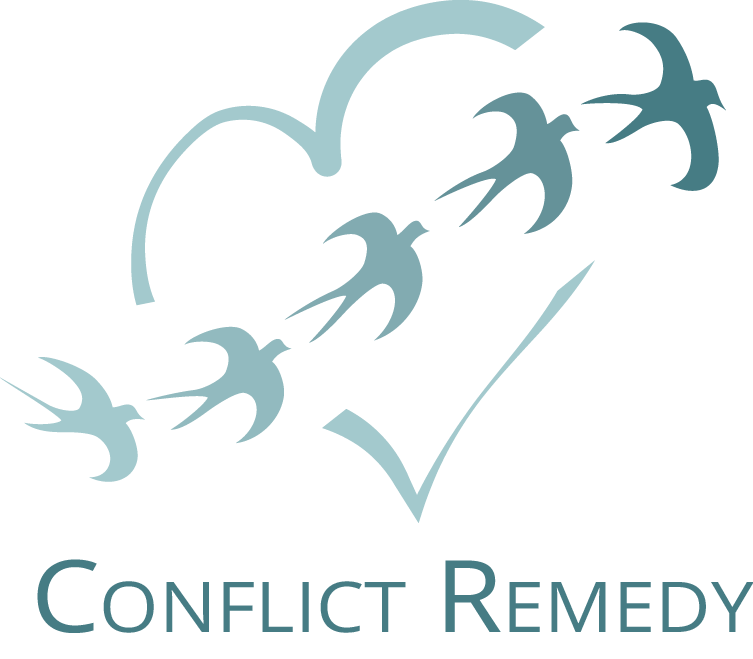
Are you naturally an interviewer or a volunteer in difficult conversations?
I read an article recently by McKinley Valentine about conversational styles for first dates or networking. As I was reading, it struck me that her analysis and comments about volunteers and Interviewers also applies to difficult workplace conversations.
I teach my students and clients to become more aware of conflict and conversation styles and how they harmonize or clash in difficult conversations. Ms. Valentine divides these styles into Interviewers and Volunteers.
Interviewers ask curious open ended questions to learn more about the other person and their perspective, one of the skills I teach my students. Volunteers disclose some vulnerable information about themselves, to invite more openness from the other person. This is a technique I use myself with students and clients, sharing a story about my experience or mistakes to help them feel safe to share their own.
But If one person is asking all the questions and the other answering, that is not a dialogue but an interview (or an interrogation), and if one person shares and the other doesn’t reciprocate, that is not a dialogue either but a monologue. Different people tend to follow their own rules about what is supposed to happen in the conversation and what the other person is supposed to do. But since the other person doesn’t necessarily share your playbook, or know your rules, essential communication can stall or you can make hasty (negative) judgments about the other person.
Pay attention
Valentine recommends monitoring the situation, and practice consciously adding the skill that doesn’t come so naturally to you. Additionally, she encourages people to pay attention to whether the other person pauses and leaves space for you in between their stories , to know if you are dealing with a rude narcissist or a volunteer inviting you to share.
How would this work in a difficult conversation?
You can start at either end—ask a person how they see the situation, asking curious follow up questions to make sure you understand (interview), and then share your perspective (volunteer).
Or, share how the situation felt to you, and ask them how it felt to them. If you know whether the other person is a volunteer or an interviewer, you can start by approaching the conversation with their preferred style, but if you aren’t sure, the important thing is to have the courage to use both approaches, even if one of them feels less comfortable. When you do this, you expand your conflict management and communication tool box and maximize your chances of having an effective difficult conversation.
 Lorraine Segal has helped over 2000 leaders and others in organizations and corporations communicate more clearly, manage conflicts, and let go of resentments. The goal: to create a more harmonious and productive workplace. Through her business, Conflict Remedy, Lorraine creates customized training and coaching programs for non-profit organizations, corporations, and government agencies. She is also lead instructor for the Conflict Management Certificate, a professional development program at Sonoma State University. She is a contributing author to the books, Stand Up, Speak Out Against Workplace Bullying and Living Together: Surviving a Pandemic. She writes a blog through her Conflict Remedy website and was listed as one of the Top Conflict Management experts to follow on LinkedIn. Contact Lorraine at https://ConflictRemedy.com for more information, to request a free consultation for you and your organization or to sign up for her newsletter.
Lorraine Segal has helped over 2000 leaders and others in organizations and corporations communicate more clearly, manage conflicts, and let go of resentments. The goal: to create a more harmonious and productive workplace. Through her business, Conflict Remedy, Lorraine creates customized training and coaching programs for non-profit organizations, corporations, and government agencies. She is also lead instructor for the Conflict Management Certificate, a professional development program at Sonoma State University. She is a contributing author to the books, Stand Up, Speak Out Against Workplace Bullying and Living Together: Surviving a Pandemic. She writes a blog through her Conflict Remedy website and was listed as one of the Top Conflict Management experts to follow on LinkedIn. Contact Lorraine at https://ConflictRemedy.com for more information, to request a free consultation for you and your organization or to sign up for her newsletter.
Related blog posts:
Don’t Over Explain in Difficult Conversations
Nonverbal Communication, Difficult Conversations, (and autonomous cars)
© Lorraine Segal Conflict Remedy 2021
